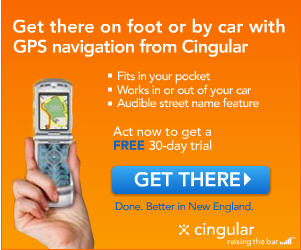Earlier I had talked about Hosted Conversations, a hybrid online ad and portal to content. All content is about your product … generated by (gasp!) the unwashed masses. Okay, that’s harsh, but sometimes clients look at user generated content that way.
Fellow blogger Chris Brown, and others, were sceptical that the ad unit would represent good cross-sections of opinion. In other words, criticisms would be mild and rare, thus destroying any credibility.
So here are three questions:
- If you truly opened conversations up, would you get seriously flamed, and have way more negative than positive opinions voiced?
- If the answer to the above is no, would the relatively rare damning reviews hurt your brand and a decision to purchase from you?
- Is the risk worth it? In other words, do people trust online reviews in the first place?
I found one person’s opinion on all three. That person is Sam Decker, VP of Marketing and Products at Bazaar Voice. In a report he presented back in September, he provided some clarity to Question #3, when he showed how there is a strong correlation between online and offline reviews. In other words, experience should demonstrate to most consumers that there is reliability in online reviews.
I can also speak for myself and say that my online research has been at least as helpful in purchase behavior and satisfaction than have the opinions of friends and associates. He also quotes a familiar source for a theory on how and why trust can be developed online:
The Edelman group found that ‘trust in someone like me’ has tripled over the last two years. The key phrase here is ‘someone like me.’ Shoppers identify with the reviewer based on the content of the review, user attributes, and product attribute ratings.
For answers to Questions #1 and 2, I refer you to Sam’s contribution to a recent Forrester Research podcast, called Word-of-Mouth (third one down in this list):
We’re finding across our clients that with online reviews, [they] are 8-to-1 positive to negative.
Products with mixed reviews actually drive conversion, because that’s what we as consumers are looking for. We’re looking for that negative review that can give us the right information we need in order to get out of decision paralysis and make a decision. It also drives authenticity, which is what this is about in the first place.
The Take-aways:
If you have a good product, it will get mostly good reviews. And even the bad ones may cause people to buy your product if (a) They don’t relate to the reviewer, or (b) They don’t look at the complaint as a big negative.
As you can tell, I feel that with proper precautions, the risk is ultimately worth it. Be honest, be open, and — oh, yes — be prepared to step into the conversation to add your brand’s perspective to the negative comments.
In a product review I talked about in my previous post, the first (and as of this writing, the only) person responding to a slam on the Hosted Conversations concept was none other than Rick Murray, of … Edelman!
